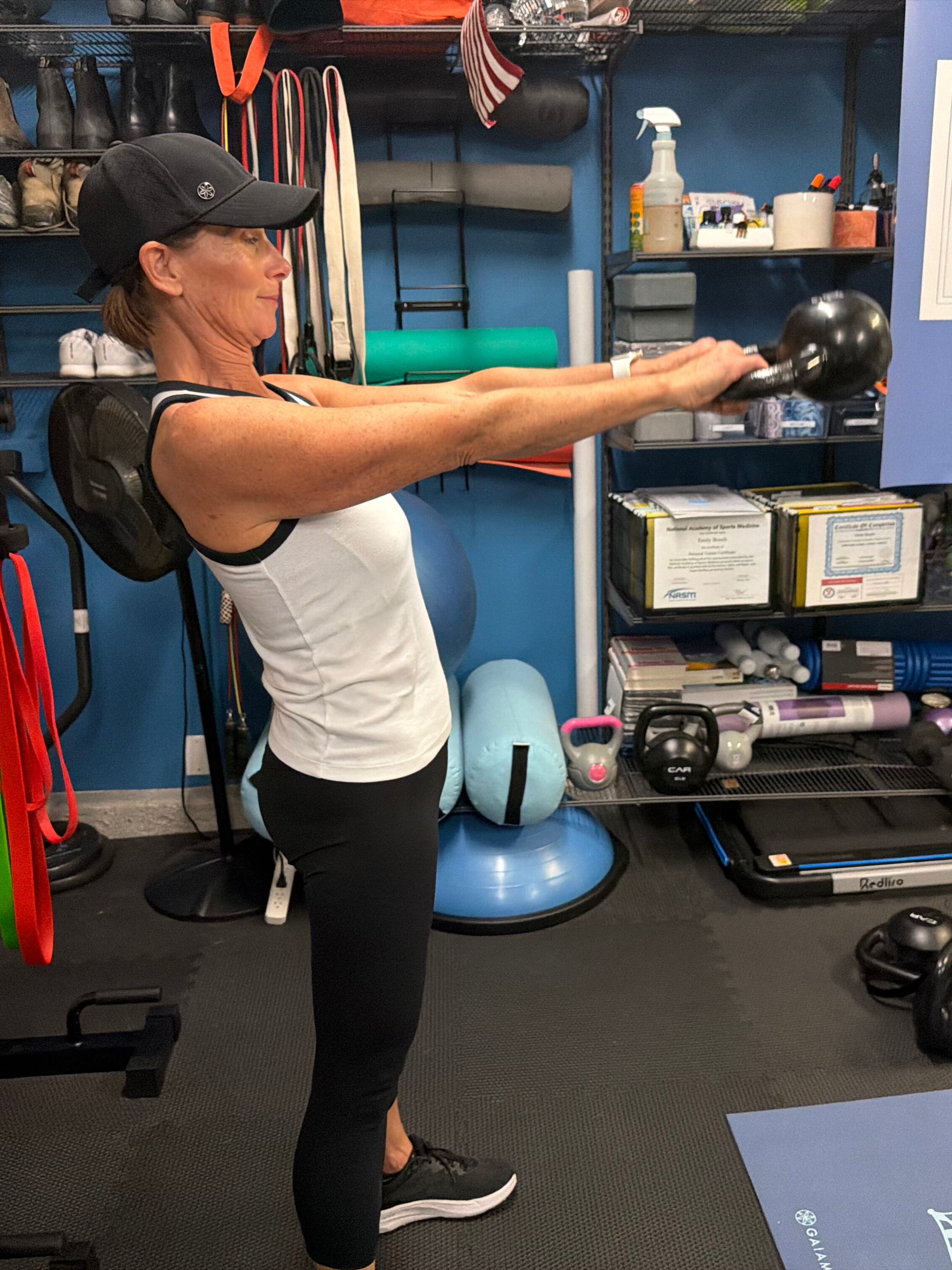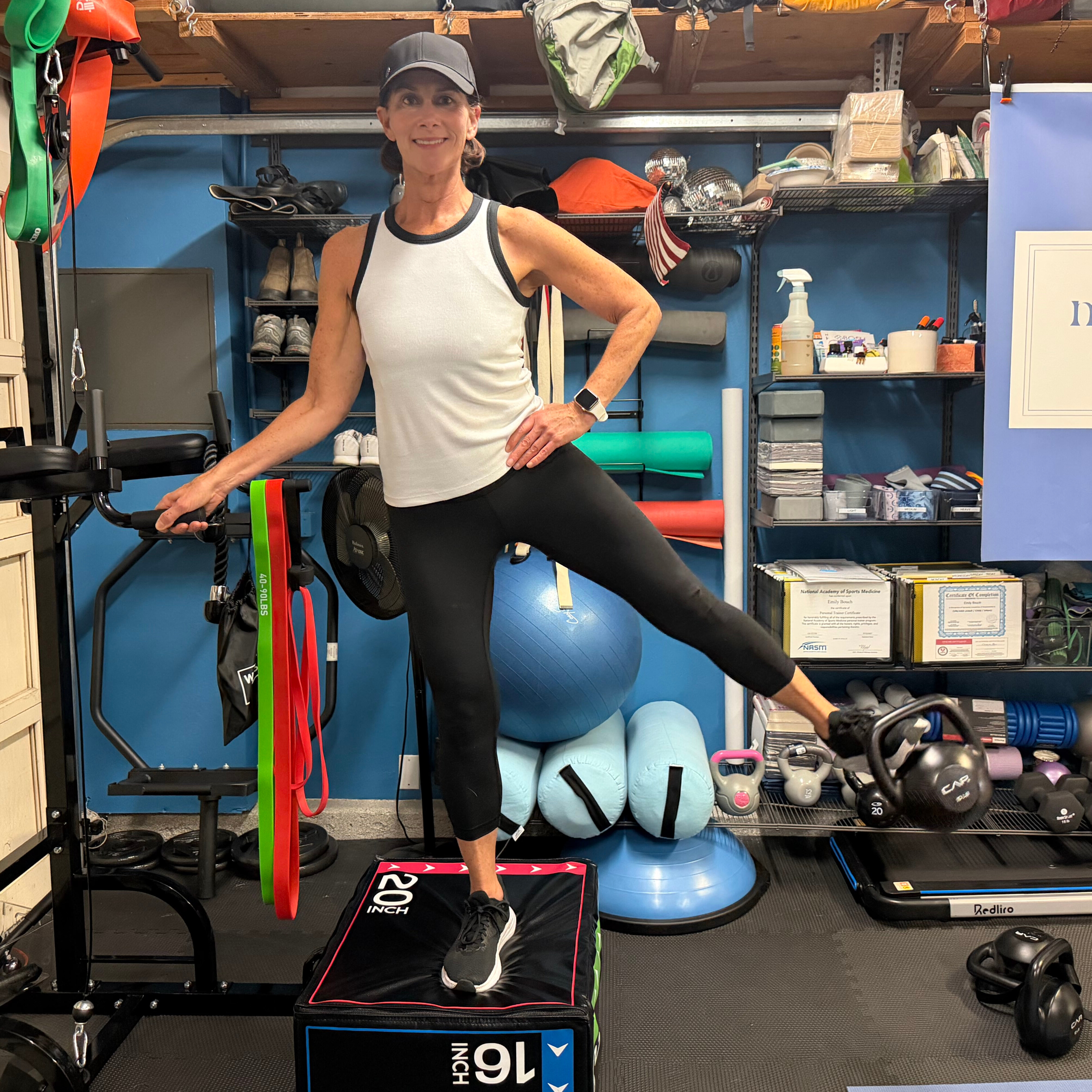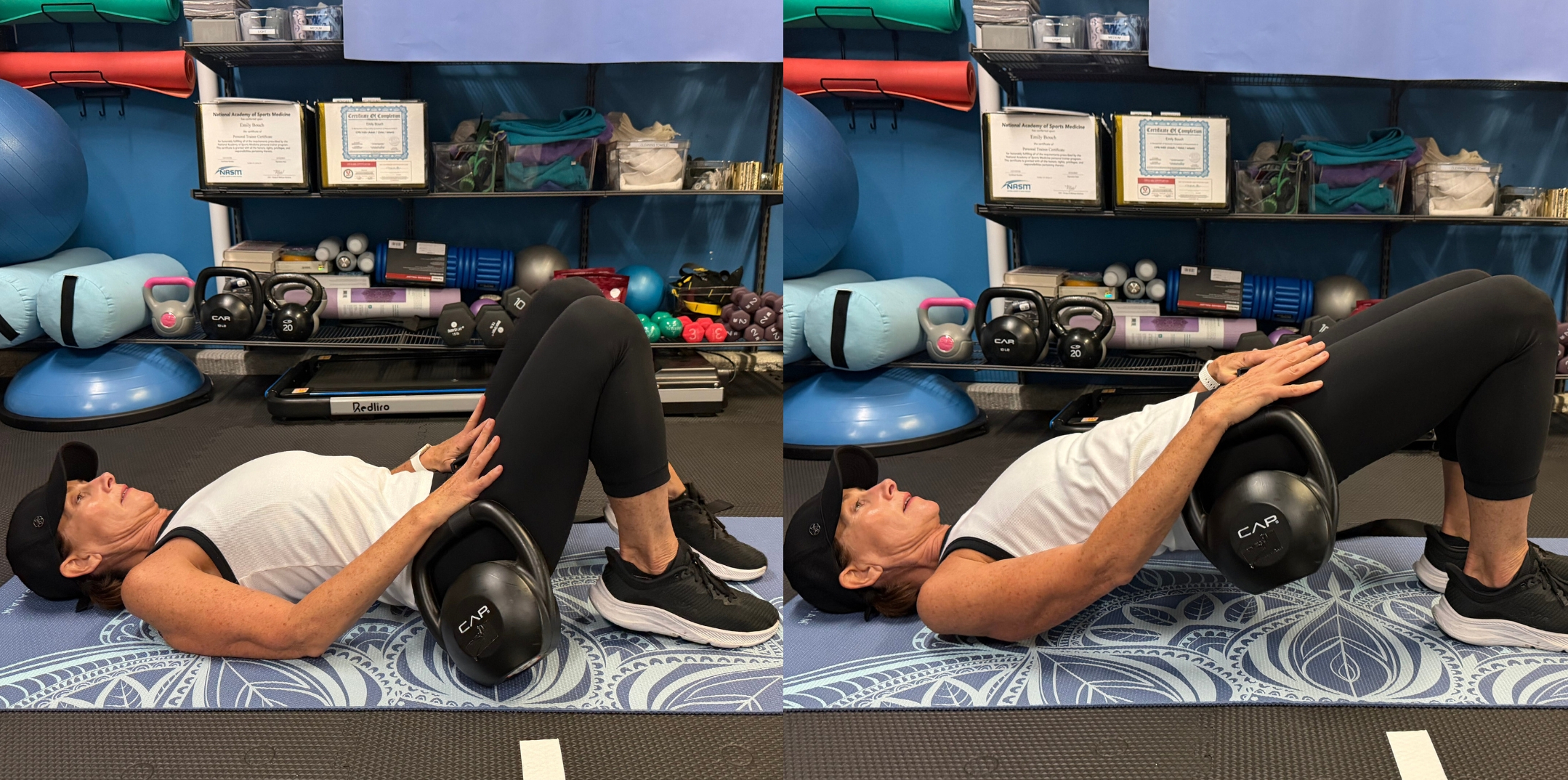Weak hips? These are the three exercises you should be doing to strengthen them
If you struggle with weak hips, these moves can help build 360° strength and mobility

Hip soreness and weakness are something that I contend with almost every day.
I’ve reached the point where the adductor muscle on my weaker side is visibly larger and more toned than on the other leg, due to the amount of extra work it has to do to support my weight and movement.
Unfortunately, my case isn’t uncommon.
With many of us working sedentary, desk-based jobs, our hip joints can become stiff and the surrounding muscles shorten and grow weaker with lack of movement.
Often, as with my hips, there is an imbalance. One side will be stronger or more problematic than the other. This muscle imbalance is something that can be tackled with unilateral exercises that allow each side to work independently, but these single-sided movements aren’t commonly part of daily life.
With all this in mind, I asked for some advice and a recommended workout from NASM-certified personal trainer Emily Bouch, who is the owner of MyBluePrint Wellness.
Bouch began by explaining why the hip is particularly vulnerable to issues.
Start your week with achievable workout ideas, health tips and wellbeing advice in your inbox.
“The hip is a large, weight-bearing joint in the body and is responsible for flexion (the movement of the thigh forwards), extension (the movement of the thigh backwards), adduction (the movement of the thigh inward), abduction (the movement of the thigh laterally away from the body), medial rotation (rotating the thigh inwards) and external rotation (rotating the thigh outwards).”
With so many jobs to do, it’s vital that you keep the joint strong and mobile, so Bouch has suggested three exercises that do just that.
Bouch recommends running through each move without kettlebells at first to ensure you can do them with proper form. Pay particular attention to the kettlebell swing and ensure you’re powering the move with your hip drive and keeping your back neutral and core braced. These kettlebell swing technique tips are worth reading if you’re not familiar with the move.
1. Kettlebell swing


Sets: 3 Reps: 10-12
Equipment: A heavy kettlebell (15-30lb)
How to do it:
- Stand with your feet a little wider than hip-width apart and a slight bend in your knees, holding the kettlebell’s handle in both hands in front of you.
- Engage your core, then hinge forward from the hips and push your butt back, letting the kettlebell swing backwards through your legs.
- Squeeze your glutes and push your hips forward explosively to stand up, generating the momentum to swing the kettlebell to shoulder height.
- Control the descent of the kettlebell and go straight into the next rep, hinging forward from the hips to let the kettlebell swing between your legs.
Why Bouch recommends this exercise:
“This move leads to better posture, reduces the risk of injury when lifting and increases power for functional movements like running and jumping,” she says. “It also teaches and reinforces a proper hip hinge, where the hips move independently from the spine, which is vital for safe lifting and daily activities.”
Bouch adds that this exercise also works on posterior chain strength (the posterior chain is the name for the collection of muscles that run along the back of your body), core strength, and grip strength.
2. Weighted hip adduction

Sets: 3 Reps: 8-10 each side
Equipment: a medium-weight kettlebell (5-10lb)
How to do it:
- Stand on a bench, plyo box or other elevated and stable surface, holding on to something stable to your right.
- Place the top of your left foot underneath the kettlebell handle and flex your foot, raising your toes.
- Raise your left leg to the side, concentrating on lifting with your hip as far as you can go without tilting.
- Return to the start with control.
- Complete all your reps on one side, then repeat on the other side.
Why Bouch recommends this exercise:
“In addition to promoting balanced hip function and mobility, a weighted hip adduction improves inner thigh tone, pelvic and core stability, and balance to lower your injury risk and enhance your athletic power,” says Bouch.
“Hip adduction is usually done on a weight machine in the gym, but with a kettlebell, you can do these at home.”
3. Weighted hip bridge


Sets: 3 Reps: 8-10
Equipment: A pair of heavy kettlebells (20-40lb) and a yoga strap
How to do it:
- Loop the yoga strap into the handles of both kettlebells and secure with a wide enough loop so that you can comfortably lay the strap over your lap with a kettlebell on the floor on each side.
- Lie on your back with your knees bent and your feet flat on the floor, and place the strap across your lap, with the kettlebells on either side of your hips.
- Engage your core and lift your hips (and the kettlebells) until your body is in a straight line from shoulders to knees.
- Lower with control.
Why Bouch recommends this exercise:
“This move provides several major benefits for the hips, from increasing the surrounding muscular strength to better stability, mobility and posture balance,” says Bouch.
“It trains the hip extensors under load, making it one of the most functional and protective moves for the hip joint. It also activates the gluteus maximus, medius and minimus, as well as the hamstrings. These recruit support from the transverse abdominis and core muscles, building support for the erector spinae.”
She adds that using kettlebells with a strap makes this movement accessible for people with limited equipment in their home gym, and can be done with a pair of dumbbells instead. In a gym, this exercise is normally done with a barbell and pad, or on a weight machine.
Shop kettlebells in the Black Friday sales
About our expert

Bouch is a wellness coach and NASM-certified personal trainer, focused on optimizing mobility, strength and overall wellness using research-backed exercise programming, nutrition guidance and holistic health strategies.

Lou Mudge is a Health Writer at Future Plc, working across Fit&Well and Coach. She previously worked for Live Science, and regularly writes for Space.com and Pet's Radar. Based in Bath, UK, she has a passion for food, nutrition and health and is eager to demystify diet culture in order to make health and fitness accessible to everybody.
Multiple diagnoses in her early twenties sparked an interest in the gut-brain axis and the impact that diet and exercise can have on both physical and mental health. She was put on the FODMAP elimination diet during this time and learned to adapt recipes to fit these parameters, while retaining core flavors and textures, and now enjoys cooking for gut health.
You must confirm your public display name before commenting
Please logout and then login again, you will then be prompted to enter your display name.
